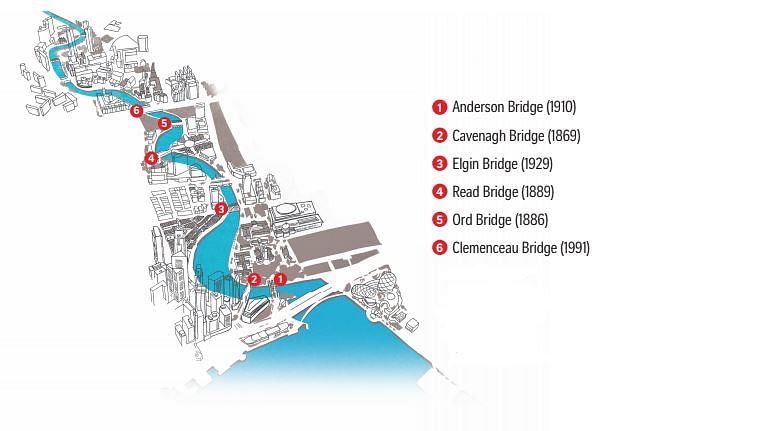

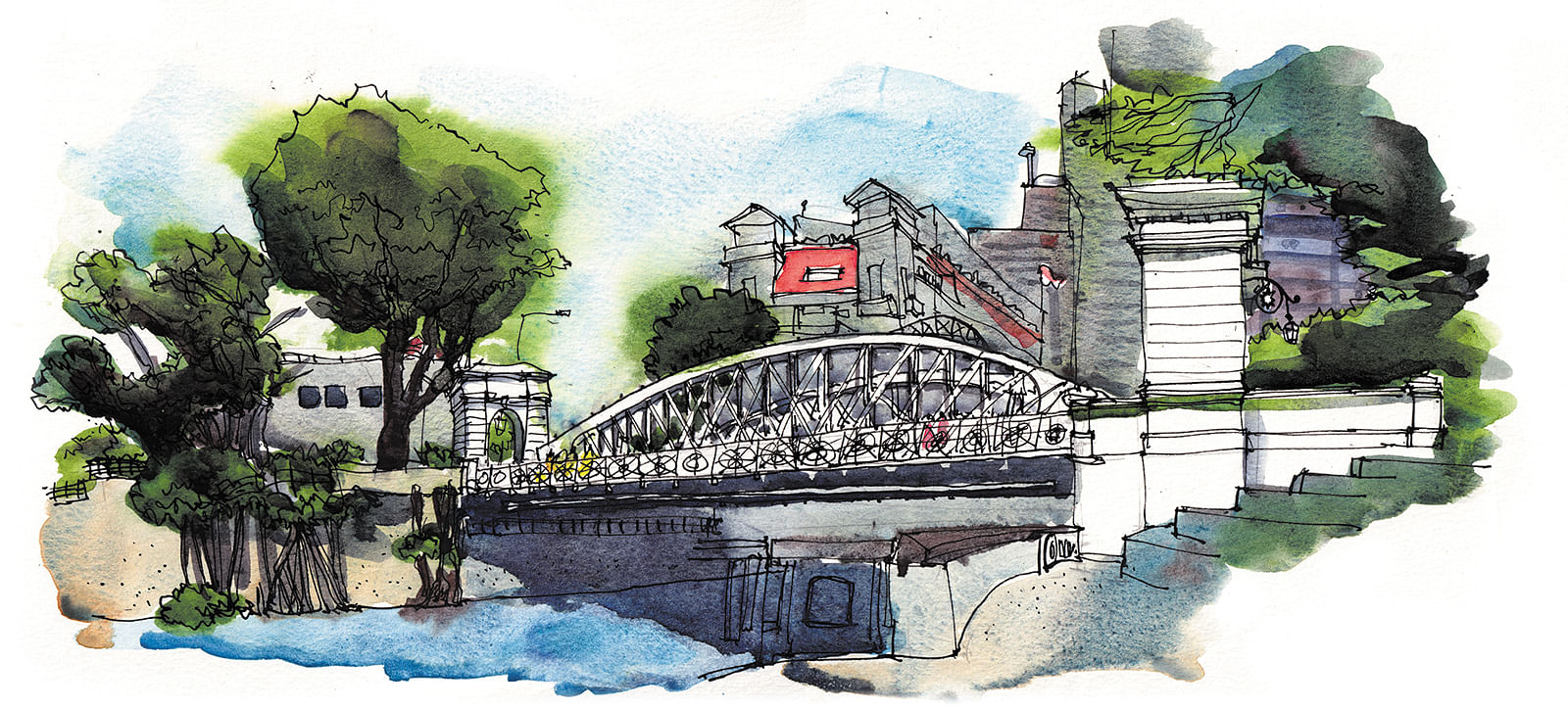
This steel bridge with three arches was completed in 1910 and was named after Sir John Anderson, Governor of the Straits Settlements and High Commissioner for the Federated Malay States (1904-1911). Anderson Bridge was built with the intention to replace the overloaded Cavenagh Bridge due to increasing traffic into town. However, when the bridge was completed, Cavenagh Bridge was spared from demolition and converted into a pedestrian bridge instead.

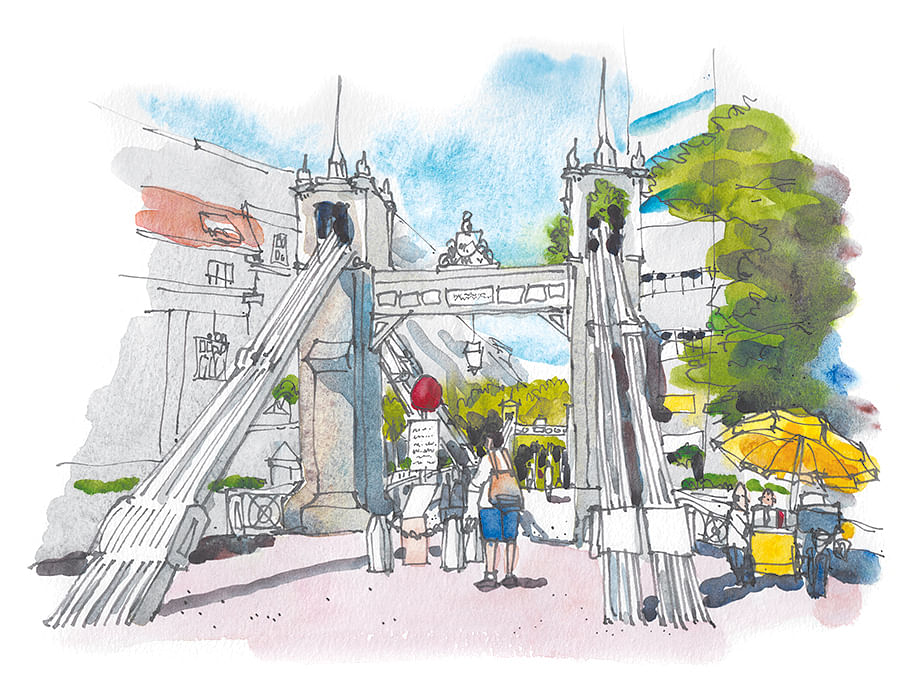
This bridge was completed in 1869 and is the oldest bridge across the Singapore River. It is named after Governor Sir William Orfeur Cavenagh, the last British India-appointed Governor of the Straits Settlements. This bridge linked the colonial offices to the financial district. Before this bridge was built, to cross the river, locals had to pay a fare to boatmen or walk on a temporary wooden footbridge (1863) that ended at Bonham Street. This bridge was designed by George Chancellor Collyer and Rowland Mason Ordish.

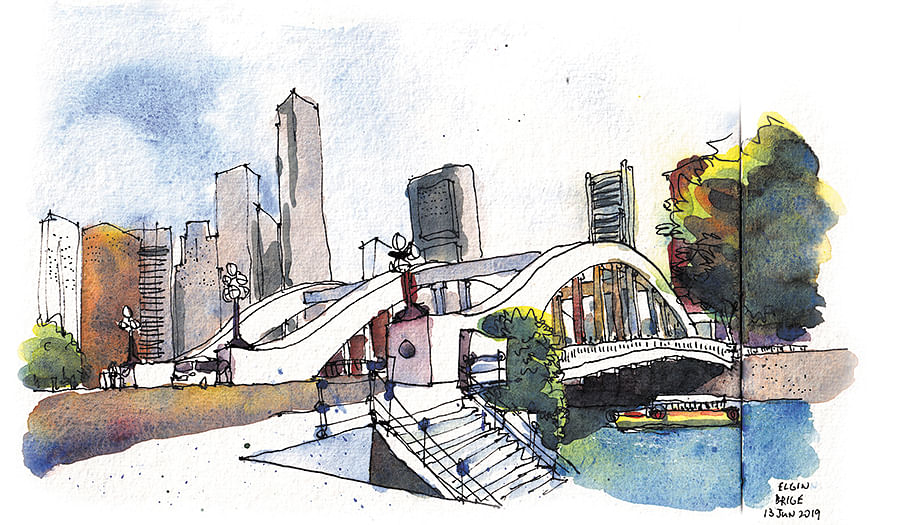
Present-day Elgin Bridge was built in 1929 in the same location as the former bridges before it, namely, the 1823 Jackson Bridge, 1844 Thomson Bridge and the original 1862 Elgin Bridge. The bridge was continually upgraded to cope with increasing traffic. This bridge is named after Lord Elgin, Viceroy of India.

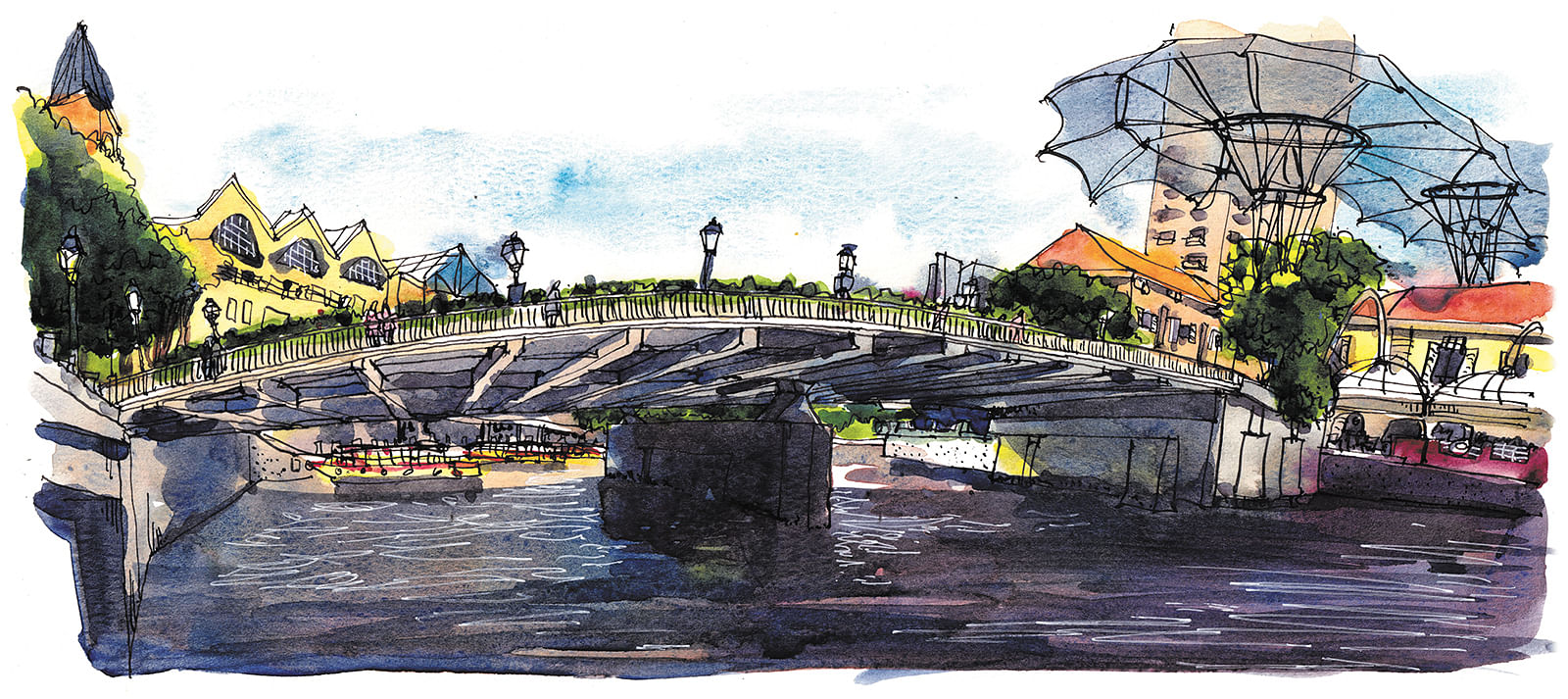
This bridge was built to replace Merchant Bridge or Tock Seng’s Bridge (named after merchant and philanthropist Tan Tock Seng). Merchant Bridge had to be replaced as it was too low for tongkangs (traditional river boats) to pass underneath. Read Bridge was named after William Henry Macleod Read, a sociopolitical figure and merchant. This bridge was converted into a pedestrian bridge in 1991.

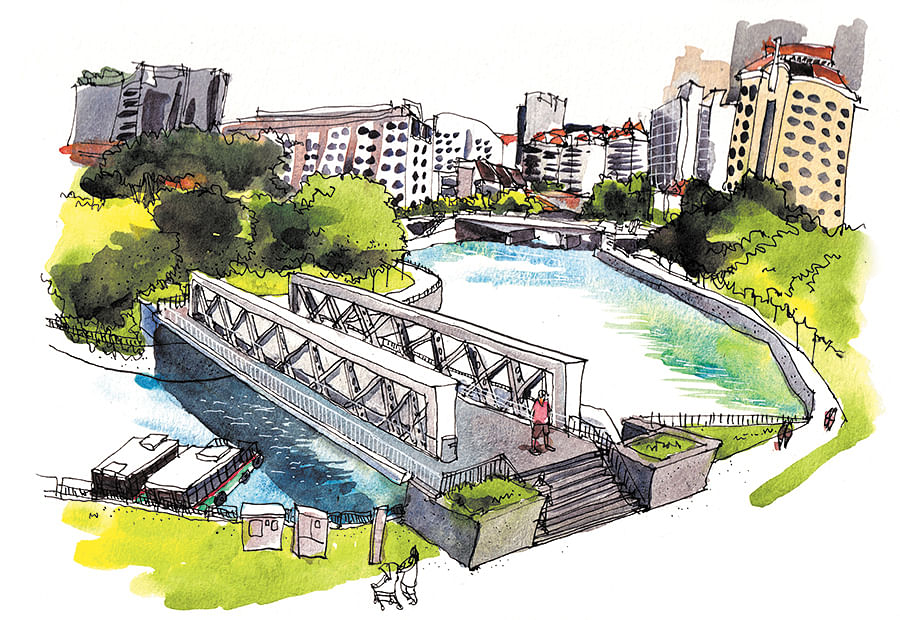
Ord Bridge was named after Sir Harry St George Ord, Singapore’s first governor after the island became a Crown Colony in 1867. This bridge replaced the earlier ABC Bridge or Ordnance Bridge. This bridge has gone by several names in the past, sometimes being referred to as the Green Bridge because of its colour, or as Toddy Bridge because of the many toddy (palm liquor) shops in the area.


This bridge was named after Georges Benjamin Clemenceau (1841-1929), the French Prime Minister who visited Singapore in 1920. He was present for laying the foundation stone of the Cenotaph, a war memorial for soldiers from Singapore during wartime. The original Clemenceau Bridge was built to replace Pulau Saigon Bridge (1890s), which served as a footbridge between Pulau Saigon and Merbau Road until it was dismantled in 1986 to build the Central Expressway tunnels under the Singapore River. The original Clemenceau Bridge was dismantled in 1989 and the current wider bridge was built in its place in 1991.
